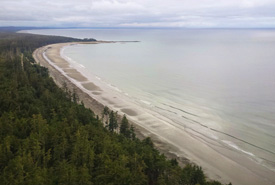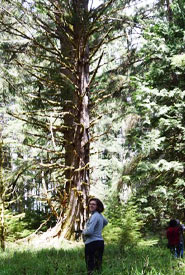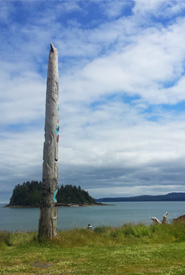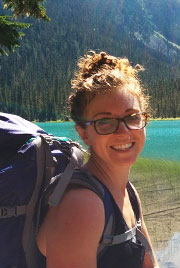Adventures of a conservation intern: My first time to Haida Gwaii

Haida Gwaii's North Beach (Photo by NCC)
As the plane descended and broke through the thick, grey clouds, I could slowly start to make out forest-green islands emerging from the dark ocean. I had finally arrived on Haida Gwaii. Me! Here! Until that moment, Haida Gwaii was somewhere I thought I would only ever hear about and never actually visit. This archipelago, off British Columbia’s north coast, is a place that seems particularly magical and remote to me, having spent most of my life in Saskatchewan. As the plane landed, I saw the clear aquamarine water along the shoreline and the bright, white, sandy beaches outlining the forest.
I have lived in BC for five years now, and recently graduated with a bachelors of science in natural resources conservation. I am currently working as a summer intern with the Nature Conservancy of Canada (NCC), providing stewardship support on many projects across BC. I was very excited to find out my summer job would take me to Haida Gwaii, the territory of the Haida Nation.
The purpose of our trip to Haida Gwaii was to visit NCC’s Kumdis River Conservation Area, to carry out stewardship activities such as setting up opportunities for collaboration with partners and local interest groups, and most importantly, to learn. Our goal was to meet people from the local communities in order to better understand Haida Gwaii’s diverse landscape, history and interest groups. Gaining this context and developing these connections is a critical part of conservation.

Melanie in the forest at Kumdis River Conservation Area (Photo by NCC)
It was a whirlwind week. Kumdis’ natural beauty and uniqueness completely blew us away. We walked across the sun-dappled, mossy forest floor, shaded by towering stands of cedar and spruce trees. Forest draped in lichen gave way to the grassy marshland and blue skies of the Kumdis River Estuary. We spotted long scars in the bark of the cedar trees, an indication of historical traditional use by the Haida. They would take strips of the outer bark to weave into hats, clothing, mats and baskets — an art form that some Haida people still practise today.
I immediately felt the strong sense of Haida culture and history that permeates the landscape. It affected the way I looked at everything, the way I took in information and how I felt about my surroundings. I kept picturing what the landscape once was — bustling villages, the people, their relationship with the natural environment — and thought about how our work here is just one, small link in a long chain of history. It was a humbling and remarkable feeling.
When we weren’t hiking through the forest, we were in and out of meetings to talk with people from the communities: natural resource managers, members of the Haida Nation, land owners and ranchers. I am a big-picture thinker, and was excited to learn more about the stories and perspectives of these groups. These served as a reminder that rallying together around common goals takes time, a sense of understanding and a high level of thoughtfulness and creativity. It was particularly interesting to hear from the Haida Nation about their goals, challenges and how they envision NCC fitting into their portrait of Haida Gwaii. The relationships we made were the reason my experience felt so immersive, and why I think the trip was a success.

A totem pole at Skidegate Inlet (Photo by NCC)
Outside of work responsibilities, I somehow got invited to two separate community hall dances, went crabbing in Skidegate Inlet, walked to a shipwreck on the east coast, visited the site of the Golden Spruce on the Yakoun River. I also camped on North Beach, changed a flat in the middle of nowhere, hiked to the top of Tow Hill and made a bunch of friendships and connections along the way. I visited the Haida Cultural Centre and learned stories and histories that the Haida Nation have passed down orally for over 10 thousand years. I saw eagles, totem poles, moss-drenched forests, giant spruce and cedar trees, misty beaches that went on for miles and what might be the biggest seashells ever.
As an intern working in the field of conservation, this was a monumental learning experience. I left Haida Gwaii feeling completely overwhelmed and enamored all at once. This trip reinforced my love of the natural environment, the diversity of people, culture and history in British Columbia and the complexities and challenges of conservation. It provided with me with valuable lessons that I’ll carry with me through my career as my perspective of conservation continues to evolve. I feel privileged to have been part of such an extraordinary trip and to be working with a group that protects fantastically unique places all across BC.
Melanie’s internship is generously supported by Imperial.


